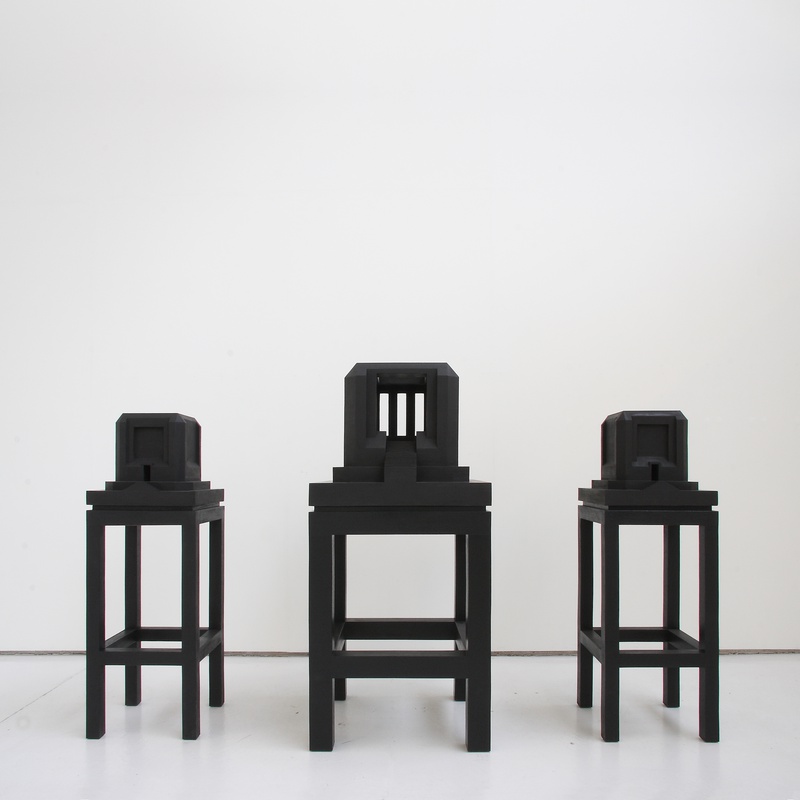His grandfather’s stories about the Second World War have given Renato Nicolodi a fascination for war bunkers. Over the years, these constructions have lost their original role and context which means that they can now be considered as independent sculptures. When creating his own work, Renato Nicolodi values this distance. It allows him to take personal ownership of the remains of the past and place them in a new context that is linked to his own view of the world. The concrete that is used for the archetypal sculptures reinforces the seriousness and the weight of what his works refer to: exuding power and being invincible.
Nicolodi’s three-dimensional works are as sturdy, monumental and geometric as the bunkers that inspired him to create them. At the same time, they are associated with mausoleums, temples, pyramids and palaces. The inward looking constructions full of dark rooms, nooks and stairs force the spectator to descend into the unknown. The austere, minimalist exteriors make these buildings timeless which is reinforced by the absence of people. The unfathomable interiors remind us of black holes attracting the visitors and inviting them to take a closer look at the space they are faced with. This space, however, is highly subjective because we can only enter it in our minds – the spectators must use the power of their imagination to enter the building. This is how different interpretations can exist alongside each other.
Even though Nicolodi was trained as a painter, he does not make a clear distinction between various disciplines. In addition to sculptures and architectural constructions he makes acrylic paintings and drawings. In the end, many of his two-dimensional and three-dimensional works of art render beauty and alienation.

